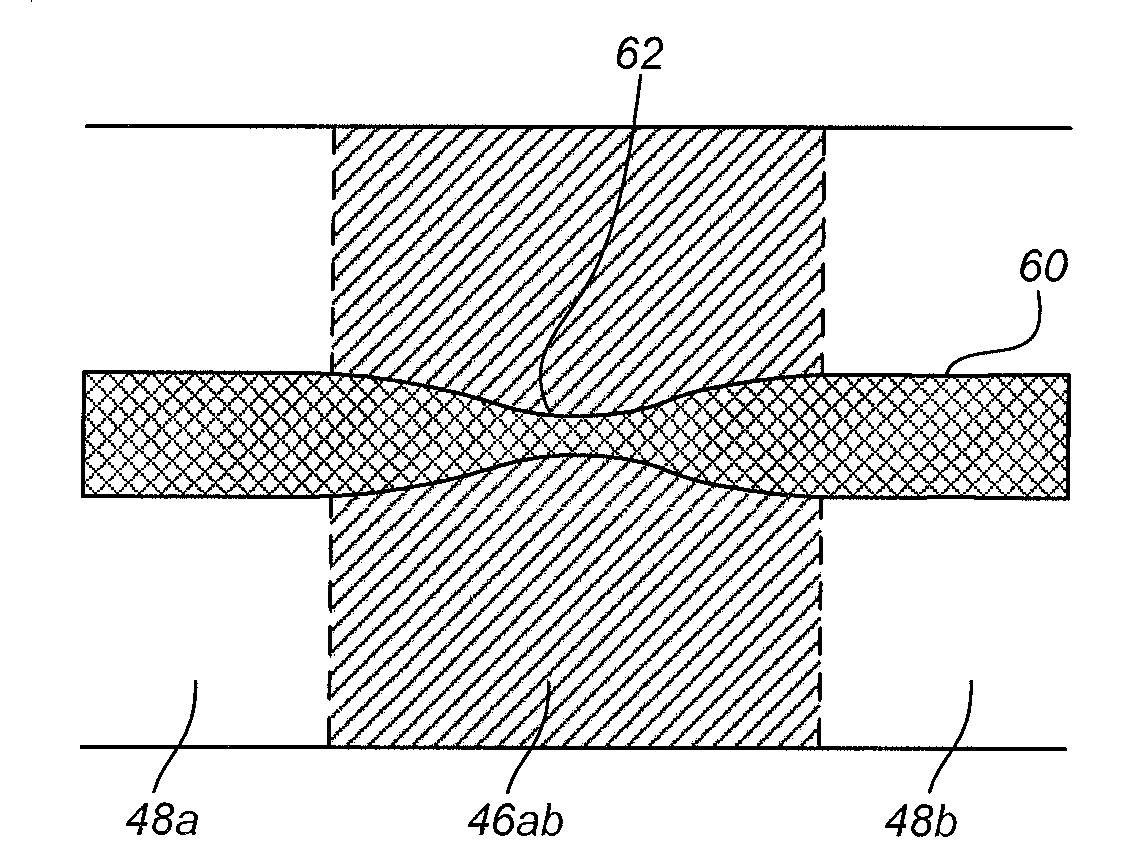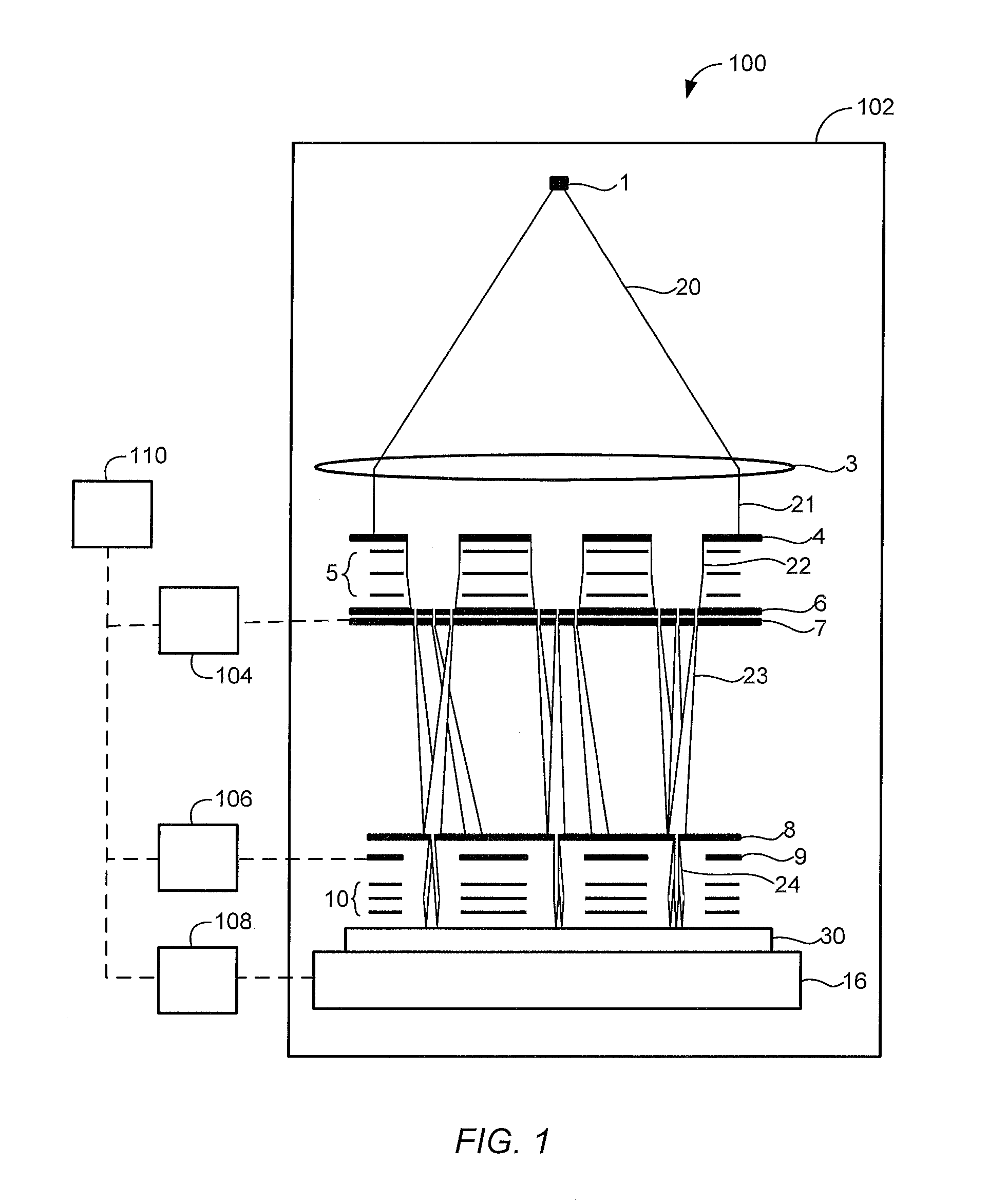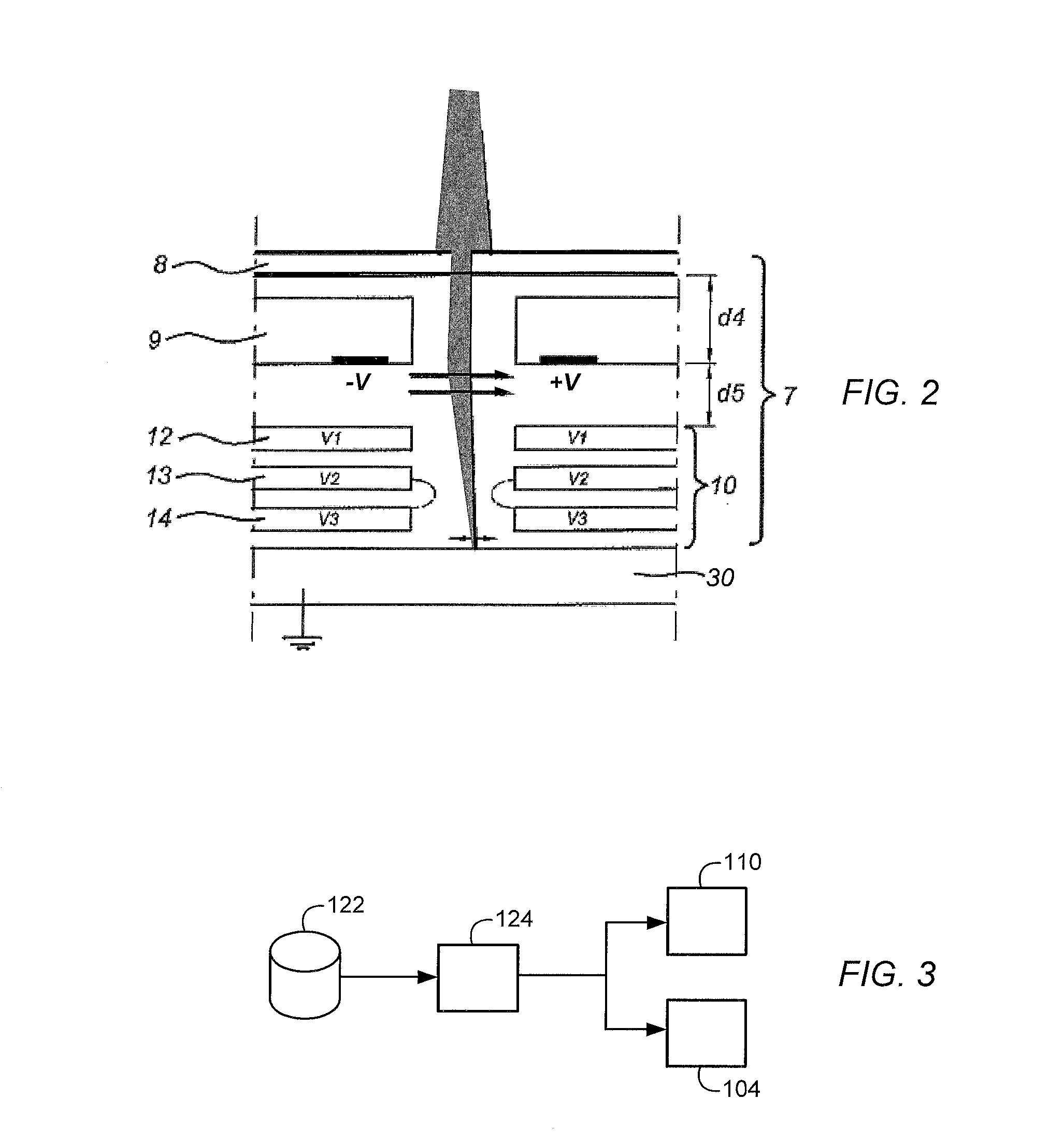Enhanced stitching by overlap dose and feature reduction
a technology of overlap dose and feature reduction, applied in the field of methods and systems for exposing targets, can solve the problems of error and uncertainty, stage movement and exact position of the target, sub-area of the target scanned by one beam may not be perfectly aligned with the adjacent sub-area of the target scanned by another beam, etc., to achieve the effect of improving critical dimension uniformity, increasing exposure latitude, and increasing exposure dos
- Summary
- Abstract
- Description
- Claims
- Application Information
AI Technical Summary
Benefits of technology
Problems solved by technology
Method used
Image
Examples
Embodiment Construction
[0066]The following is a description of various embodiments of the invention, given by way of example only and with reference to the drawings. Unless noted otherwise, the drawings are not drawn to scale.
[0067]FIG. 1 shows a simplified schematic drawing of an embodiment of a charged particle multi-beamlet lithography system. The embodiment shown is based upon an electron beam optical system having no common cross-over of all the electron beams, such as described for example in U.S. Pat. Nos. 6,897,458; 6,958,804; 7,019,908; 7,084,414; 7,129,502; 7,709,815; and 7,842,936, which are all assigned to the owner of the present invention and are all hereby incorporated by reference in their entirety. The embodiment shown forms a plurality of beamlets from a plurality of sub-beams.
[0068]An electron source 1 produces a homogeneous expanding electron beam 20 which passes a collimator system 3 to produce a collimated electron beam 21 and then impinges on sub-beam aperture array 4. The aperture ...
PUM
 Login to View More
Login to View More Abstract
Description
Claims
Application Information
 Login to View More
Login to View More - R&D
- Intellectual Property
- Life Sciences
- Materials
- Tech Scout
- Unparalleled Data Quality
- Higher Quality Content
- 60% Fewer Hallucinations
Browse by: Latest US Patents, China's latest patents, Technical Efficacy Thesaurus, Application Domain, Technology Topic, Popular Technical Reports.
© 2025 PatSnap. All rights reserved.Legal|Privacy policy|Modern Slavery Act Transparency Statement|Sitemap|About US| Contact US: help@patsnap.com



